History Community, Civics & GLAM. Means to Bootstrap Digital Economy Growth & Knowledge Banking Tools.
History: Community, Civics & GLAM. Means to Bootstrap Digital Economy Growth & Knowledge Banking Tools.
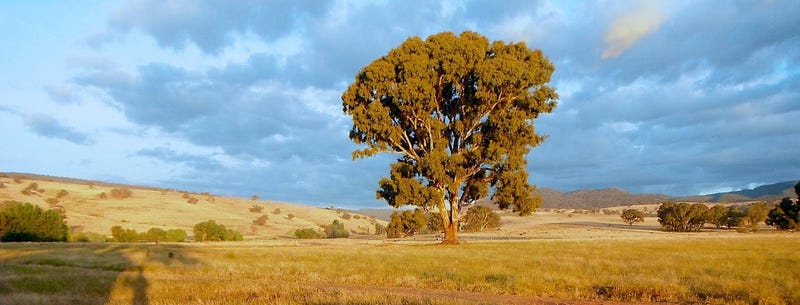
Standing the test of time: A Solitary tree, where all others nearby are now long-gone.
FIRST DRAFT *
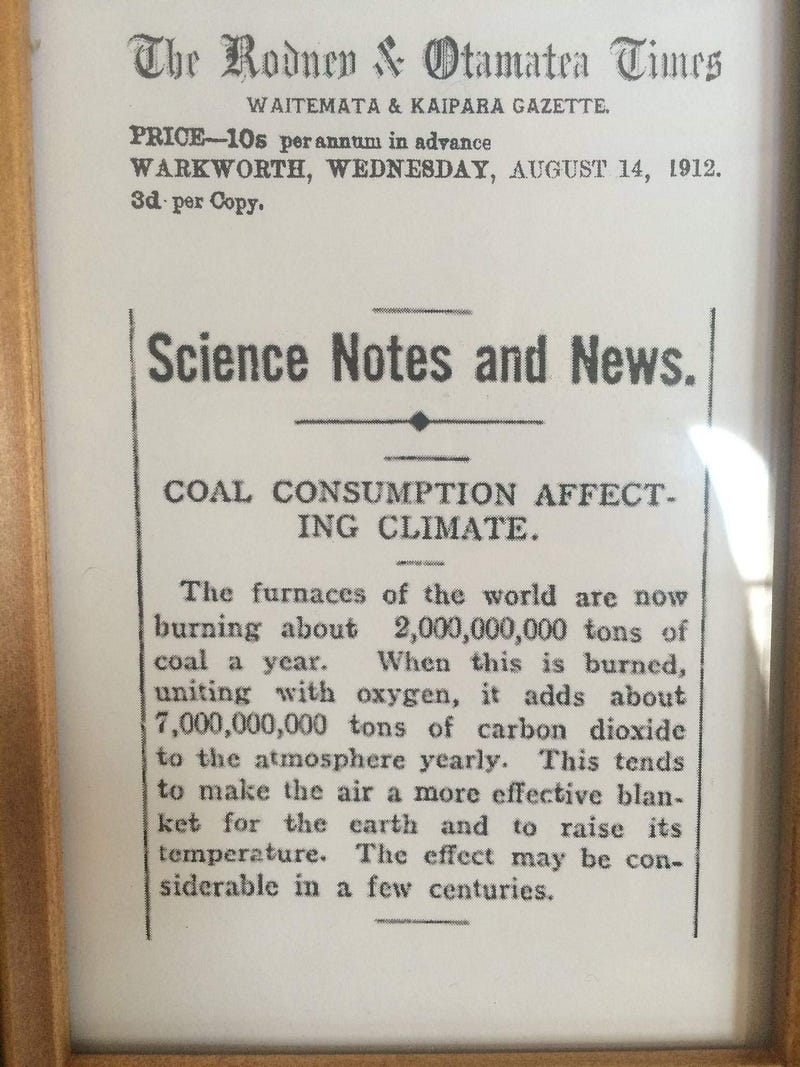
Source: Facebook — noting seperate archive link to the same notation
In this article, I illustrate some historical works & journey notes, that relate — in-turn, to provenance.
This in-turn canvases many aspects relating to the journey from ~2010–14, as i reviewed and redefined the application framework for my Human Centric Web and Knowledge Banking works, that were previously thought of as an ‘information bank’. Whilst it all started small, it did so in a particular way.
Lived experiences play an intrinsic role in the foundational consideration about any persons work. Experiences, illustrate the challenges & provide an opportunity to solve problems.
Time, and lived experience provides thee ability to define improved means to solve complex problems others may yet understand exist at all, as it furnishes a means informed decisions, based upon facts.
Whilst people certainly compete to obtain income, those who do so without having previously developed a comprehensive understanding, of what it is they are setting out to achieve, are far less likely to succeed. The implication is, that we only have so much time, and choices are always made. These choices, are in-turn both important attributes relating to provenance; and intrinsically important aspects about what it actually is, that is our world.
How it is, that each of us, participates in our biosphere ecology in a manner that is distinct from cyber-physical & legal actors; now so very influential.
“An investment in knowledge pays the best interest.”
-Benjamin Franklin
The application of my my prior works (carried out throughout the 00s), re:started by first explored in the context of a small community. I had gained confidence, and felt compelled to deliver infrastructure for ‘verifiable claims’
although that specific term, now associated to outcomes, was defined by W3C.
The broader motivation was to make the parts for a ‘knowledge banking industry’, where people had a copy of the data-assets relating to lived experiences of significant impact to their lives, as described in the top diagram here.
Whilst enquiries were made about ‘retail’, ‘loyalty’ and ‘electronic prescriptions’ (which i produced work to better explore); I ended-up considering Culture, Heritage & Civics to have better underlying business system that could maintain ‘integrity’ (and mitigate significant risks). The pathway always sought to produce the operational capabilities to deliver means that was ‘fit for purpose’ to support other use-cases; targeting overall, the real-world changes that i’d been working on, for many years.
This was in-turn coupled with works that sought to deliver citizen journalism, amongst other more enterprising opportunities — some that grew, but none that delivered the human (digital) identity outcomes i though at the time, was a requirement. This was many, many years prior to ‘digital government identity’ and indeed, commenced prior to relevant standards works, that followed.
As illustrated by the above image about coal depicts; whilst many situations of most concern today are not new, and that there is in-fact always a history attached to them.
Often, present characteristics show, old problems are only getting worse, neglected, with lots of ‘talk’.
I think we need knowledge clouds; whilst others have been too busy making sure they can own and control them, but don’t know how. Yet as is a derivative opinion / insight that my work leads me to believe is a part of reality, The perversion of reality is decrypt-able, and most often far more costly.
“the distinction between reality and our knowledge of reality, between reality and information, cannot be made” Anton Zeilinger
Yet, the means to demonstrate this is still only harboured by the few. So, the challenge of forming provenance supportive knowledge systems today, is far more of a social issue, than it is a technical one. Any claim there are technical limitations preventing it, would be unlikely to stand the test of time..
The merits of any consideration — in-turn depends upon how we define history & how heritage systems are defined as to be relied upon by people, seeking to learn about the past & the resources they need to improve ‘situational’ and/or ‘circumstantial’, awareness.
The means for people to make trustworthy & defensible assessments.
Whilst there’s some fairly powerful forces at play, history helps us to navigate.
The concept of visionary leadership, provides for truely remarkable evolutions of the means available to humanity, to advance our species & to thrive.
There are a few fields of prior works that i curated & blended as sub-projects. I supported multiple projects with the view of forming underlying infrastructure now illustrated, by my writings on medium. Whilst doing so, the practice method i employed, sought to find the kind & trustworthy people, who could later be depended upon, should the works become complex.
This process, whilst still not complete, has taken alot of time. It is debatable whether this could have been better influenced in the past, but for me, it simply was not possible. Yet my challenges are in-turn balanced with the subsequent fact that even those led by the inventor of the world-wide web, hasn’t been able to do it (yet) either; and i’ve found myself having been intrinsically involved in those works, alongside the joint efforts of many others, who seemingly share the basic principles of delivering a similarly visionary outcome.
Although the provenance of who really did what, is now too hard to tell.
Back from 2009–10; the first ‘go to market’ focused upon the desire to influence a shift in the societal attitudes towards Australian Aboriginal Heritage, which i first started working on, in 2009 — that in-turn had a relationship to past work with Dubai. I wrote a plan, and sought help.
The indigenous project has continued due to the leadership of Brett Leavy driving this important social endeavour, who is best equipped to deliver those works. Brett’s works are shown to start from at least 2003 and had advanced in an effort to seek similar goals, from 2007; although the full history and context of brett’s work, is more complex to explain. Indigenous Australian Culture have a variety of very different rules, and some remarkable ancient workings relating to knowledge management and the pathways through which, songlines are made known..
The other integrated field, was Community Media & Civics applications.
Therein, I’ll describe some of the objective outcomes & my view on present day challenges that still remain & link that back to my broader works. Whilst the story may jump around a bit, there’s a method to my process overall; and some of that, relates to what i call ‘social encryption’.
As with many situational examples in our lives, it is “what’s between the lines”, that is most meaningful for those who have enough knowledge, about it. This is, in my opinion, a practical science that tooling can be employ. Therein; The benefit about works, that relate civics & heritage to cyber-physical infrastructure; is that, the means to navigate new foundations upon old - is easily parsed as a human form of ‘metadata’, between the lines of script.
Whilst it is entirely the case that “not everyone needs to know everything” and that privacy, but moreover dignity & human rights such important virtues, there’s a ripple effect caused by exploiting ‘kindness’ sameAs “bad karma”.
Historical Notes
After commercially failing to reap the rewards of sophisticated Hybrid TV works;
I ended-up being ‘swept up’ by a friend delivering digital cinema. Amongst the works, i set-up the first NOC (network operations centre) got the first ‘test bed’ working; and was sent out to deliver the first ‘fresh’ digital cinema.
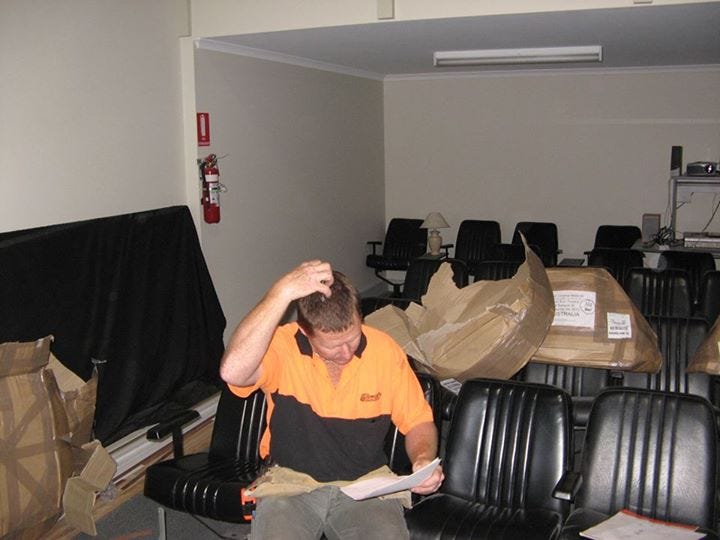
My Heritage industry application works, started with a project to make a new cinema — 2008–9…

Press Clipping from 2008–9?
Sent out, simply, to get it installed, set-up and a quick tutorial on how to use it; I asked for permission to do more, and became instrumental to an innovation project that delivered one of Australia’s first digital cinemas and it was also, run by kids from the local high-school.
As the project evolved; as part of extending the ‘vision’ of services offered by the local cinema; I started teaching kids how to code, manage basic websites and produce video assets (ie: advertisements, local media, etc.). Later, 2010–11, as my life, fell apart during a difficult time, the independent cinema industry was in jeopardy that required, in-turn, a response to an array of other issues that needed to be sorted out.
(Platform — re:configuration).
I ended-up in Mansfield doing what i could; whilst sadly, not everyone survived.
During that time, a local, Peter Rancie was introduced to me asking for my help for a project he had funded to support civics; a project called ‘Aus Civics’.
Part of the Online Assets that incorporated media and online resources.
Peter Rancie, had appeared to have spent 7 figures on the project, through Australian Civics and Heritage Foundation, which had a history with genealogy projects in other parts of Australia. When he approached me, we watched the film package provided, and he showed me a copy of the commission illustrated in that media package.
The short film, The Australian Way, brought me to tears… Peter first asked for my help to obtaining distribution — which was fairly easily sorted out with ICAA. As is somewhat explained here — the past few years had been spent supporting the rollout of Digital Cinema across Australia; which was part of the ‘environmental’ that led me to being in Mansfield. But once this was achieved, i was told that there was a problem engaging schools, and that the project had no money.
Whilst it was backed by this ‘commission’, not enough support was made available to the project as was required, to realise its goals.
So, i got stuck into it. Thinking, it was Good for my Soul & Good for Australia.
I’d previously made an investment (mostly time) in a struggling project concept involving environmental curricula & community hub project concepts. The Hewitt Brothers had put alot of time and money into their ideas, having had a long-term battle that led, eventually, a win.
This project (undertaken 2007–8) incorporated an array of works that sought to progress a field of endeavour they’d shown they’d been committed to pursuing over a very long-period of time.
Global Green plan — background, historical show-reel transferred from VHS
So, as Peter gave me his copy of that commission (which i later framed and gave back to him); I got onto it, starting work — instigating activities with Regional Development Victoria, Education Services Australia (ESA)
My work engaging ESA to get yaba funded, which didn’t work out for me; was later on in life found, that the person i dealt with was a close family friend of a girlfriend I met, later on. This helped explain to her & her family, some background that they found hard to believe initially.
my poverty, not deemed good…
Alongside the call from Harold Mitchell, at her family beach-house ;)…
But, at the time — i made an extraordinary efforts to get ‘Aus Civics’ up and going; but this was not going to work out, for reasons that are beyond me.
Nonetheless, with my trading name ‘media prophet’, and a bit of help from community, a few dollars here and there; and some money provided by my grandfather to help me do something that would help me get back on my feet— the combination projects i first started on, was very much about civics.
This is essentially what inspired the trading name term ‘web civics’.
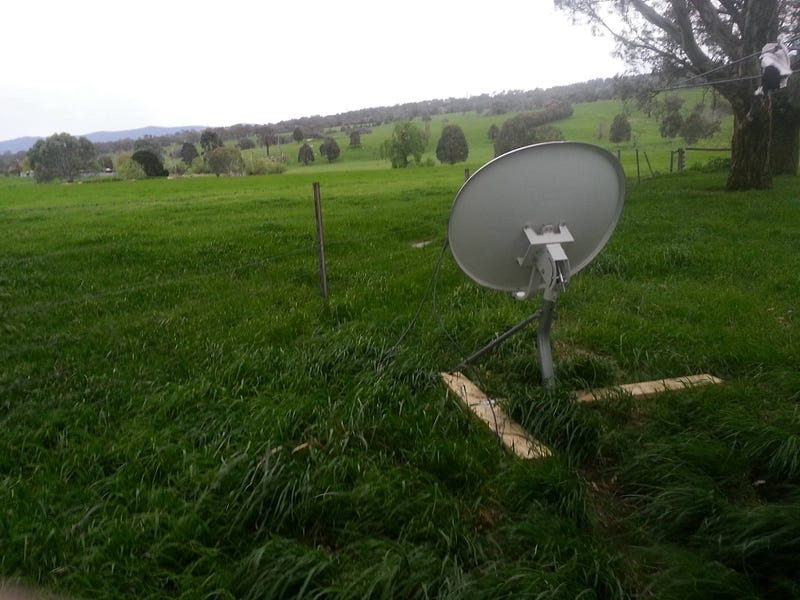
IPSTAR Broadband Satellite connection (Provided by Activ8me), the satellite equipment itself, provided freely by a community member in a nearby town.
The view was; that there was an opportunity to produce a sustainable, basic revenue base; whilst building more sophisticated infrastructure, which is how my full-time work on this ‘evolutionary platform framework’, was first started — leading me to W3C, fostered by the support of those that included Vint Cerf at an early stage — who has warned about a digital dark age via a satellite dish — out in a paddock, living in a hut i couldn’t afford; but survived due to exceptional circumstances, as a consequences of the good work i was making best efforts, to undertake and those in the community who supported me to survive the acts done by others, and the very difficult situation through which i started this volume of work.
I was highly inspired by the Aus Civics Project, and wanted to help make it successful. At the time, i was also advocating for changes to the family law act, centred around the belief that the UN CRC should be relevant; and this outcome was delivered by changes to legislation in 2012
(although, subsequent works sadly illustrate the statement made by the prime-minister at the time that the changes would act to protect ‘women and girls’, sadly requires far more effort, to bring about, as is illustrated by other articles)
Therein — The consideration that my fable of lived experience tries to illustrate; is an approach that seeks to consider heritage systems in relation to broader social cohesion / support frameworks — that were engineered, as a consequence of a series of unique experiences — creative work derivatives.
Therein — Part of the project engineering principles, sought to teach kids about our system of democracy; yet the problem was, that this was not part of the curriculum at the time. So the objective relationship between GLAM, or moreover — heritage systems, is that assets, like those in public libraries, should be engineered electronically to best support civics uses of them; but that, the underlying ‘production skills’ have traits, that can be factored to provide significant supportive knowledge economy ecosystems. These innovative ecosystems manufacture processes in-turn, bringing about new opportunities for gainful employment, skills development and social welfare.
Mansfield Media Concept Video — 2011
Therein — As related works sought to consider the means to bring about improved (mental) health services; with a particular focus on the needs of young-people, which was thought to be something that could be improved via clinical grade teleconferencing solutions; which was presented at a National Mental Health conference in 2013 with Professor Jo Grimwade, who more broadly provided enormous levels of support, whilst outcomes (many would consider extraordinary) delivered.
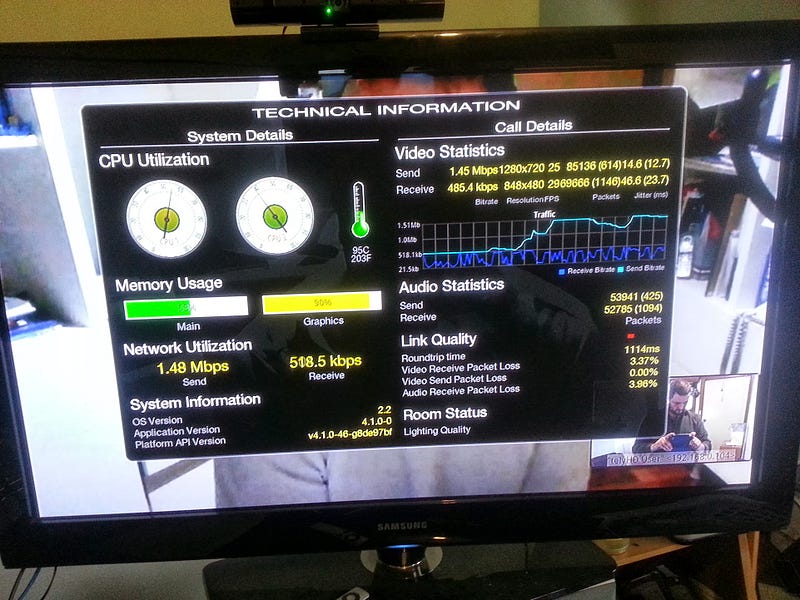
The infrastructure requirements for high-grade media services have multiple useful purposes, as does civics engagement with those who may be isolated. With the support of Des Tarei of IPTV Oz, providing IPTV test-kit, and the dish, a series of successful tests and subsequent recommendations (pre: “telstra health”) was brought about. The solution for mental health, actually had to parts to it; one, was a sophisticated and expensive ‘telepresence’ method (using beam-splitting glass) and light field camera optics, that was intended to support advanced clinical services (inc. analytics) in addition to supporting 3d rendering of ‘things’; but the more easily accessible solution, sought to get mental health services into homes.
It was some years following these works, that i called for a Royal Commission.
In 2018, on a partisan basis delivered following a successful election outcome.
I thought the problem was that i needed to define a good enough business case. Yet that was shown not to be the problem, as history now better illustrates…
History shows us all, overtime, that visions formed by some, of what could be built upon, early on, are instrumental to the derivatives outcomes and the means through which those creations get support, and deliver, community outcomes today. The benefit of history, is that it helps us figure out how to solve problems that present with similar traits, in the future.
The reality today, is that the full stories, of what actually happened; is all too often buried somewhere, in history. Whilst names might change; the lived experiences can’t be ‘copied’. Good, purposeful work weaves a vision through the process of creating (positive) outcomes; in a manner that’s seemingly inevitable; as the concept by Noam Chomsky speaks of & later noted to me.

A question i posed about his works. Noting i did debate the idea that those who are disassociated, truely unwell may in-turn deserve compassion, overall.
An instrumental part of how this all started was due to a desire to make the world a better place for younger people; and to demonstrate to them in a participatory manner; ‘Without Notice’ was a promptly defined project undertaken ‘without notice’ engaging community.
The circumstances that brought it about — was that someone had produced a video highlighting kids living in poverty, which upset me.
So i got some equipment and worked with the kids to produce this video, which was in-turn set-up to put the onus back onto adults in the community.
‘Without Notice’ — a project undertaken ‘without notice’ engaging community. Someone had produced a video highlighting kids living in poverty, which upset me. So i got some equipment and worked with the kids to produce this video, which was in-turn set-up to put the onus back onto adults in the community.
In-turn, the considerations around GLAM infrastructure — also relates (on a civics basis) to the technical means required to web-cast local events, such as the local football / netball, or other events held within the small community.
Whilst the actions i undertook to perform my ‘proof of concept works’ were built upon my means to obtain specialised help, from specific other people in a marketplace of millions of people; the idea, was to make this sort of capability supportively accessible to any young person willing to have a go.
Whilst I demonstrated the fact that the high-school students were able to use production equipment; a related problem was that the equipment is very expensive & needed a safe home. Something kids, shouldn’t be expected to manage well, without oversight by others who want to best act as a guide...
Government had provided funding for a public hall, but it was not equipped with appropriate audio infrastructure; nor, (video) production equipment that could, if it were available for use — improve the opportunities for local productions.
In parallel to these considerations; were considerations around the fact that local businesses were outsourcing their digital media work to companies based elsewhere (ie: businesses located in the capital city of the state); and that the income disparity between poorer local people, and retail pricing that was at times designed to capture value from tourists; were amongst the ‘digital economy’ infrastructure opportunities that could be addressed, in a small town setting.
An example of local advertising creation (using simple tools)
This is to some-degree addressed in my articles about small business and social applications; but the broader problem was, that i was looking for a ‘simple application’ that could be invested in, by me (and my grandfather) to develop an initial informatics ecosystem. I had started working on some promising national projects, and felt i could do alot of good locally; whilst developing a new revenue base — that in-turn supported local media production, and the means to provide job opportunities, for kids.
Example of Event Production Opportunities — that could be brought about in communities.
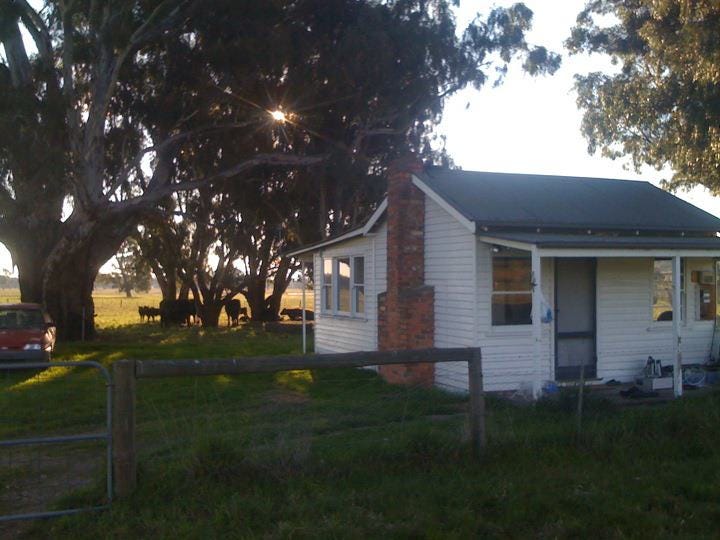
With some support financially provided by my grandfather, and a few odd-jobs that provided income; I started this journey, Living in a Hut, on as little as $50 per week for a long period of time (total of about $9k for one entire year). I couldn’t have survived without the support of kind & good members, of the community…
With a decisive objective to produce this ‘knowledge banking industry’. The objective was to take-on some small projects that could attract funding and through that means build technology ecosystem pieces that could be built-upon to deliver the more sophisticated ecosystems framework, that is now described by my online writings.
By 2013, i’d put together my first ‘ebook’ on the topic which i then labelled, from a business initiative point of view The Liberal Arts Association. It was the case then, as it is still for the most-part now; that civics projects offer a means to produce, deliver and provide the means for communities to understand; functional opportunities that can be brought about by a specific form of technological approach. As illustrated above, the attempt made, back then — was to produce an applied methodology for the purposes of civics; and with the intent of improving digital media related economic structures, which is of particular economic benefit to small communities, in regional areas — where there is fewer jobs.
Therein, The methodology sought to support GLAM, understood that more sophisticated markets were indeed capable of building (and funding) vastly more sophisticated derivative outcome.
This is in-addition to the fact that urban communities (cities, regional centres, etc.) often have more infrastructure and providers, participating in the local market.
In regional (country) areas — this is not so much the case, and for countries such as Australia where ~24% of the population live in regional places
‘Knowledge Economy’ initiatives, requires more than just ‘internet connections’.
So, it was my thinking at the time — that the social opportunities — from a business systems point of view, could improve means to better support economic & skills development for local people, particularly disadvantaged kids, where some need better support by communities (ie: particularly for those whose parents have drug & mental illness problems, treated or otherwise); and that resources be produced, that could in-turn better support academic opportunities; alongside, the production of print products (ie postcards, posters, canvas prints, etc.) and further opportunities that could (have been/) be brought about, as a consequence of establishing some sort of ‘digital media — civics hub’.
So, the work 2011 & 2014, At which stage I left the hut (shortly before the towns elders got the funding for a version of the project) as (part of) the project became funded; — the area of heritage & community media, was how i first focused on getting the ground work done, in difficult circumstances.
The considerations made back then, are in many cases better demonstrated now. There continues to be a clear opportunity to produce this sort of infrastructure; and the considerations relating to heritage & digital media,
from a small country town perspective, as to address more complex underlying problems — by undertaking ‘exposure works’, produced with the intent of;
Providing environment where seniors were able,
- To transfer physical library assets (and resources such as VHS tapes) into digital formats; which would Improving ICT literacy by Seniors; and,
- Provide the ICT resources required to support local Projects; and,
- Produce accessibility & licensing; for civics and commercial applications
- Work with Students (young people) to support civics education (Social cohesion — as to build the foundations for the digital media capabilities)
Which in-turn; sought to (indirectly) explore (and support) far more complex topics, that related in-turn to my broader long-term works, to build a ‘knowledge banking ecosystems’; particularly those relating to cyber security..
Therein the consideration is that if a community performs well with integrity by forming a nurturing environment to protect the vulnerable; then the means to ensure all people in regional centres can be supported by advanced ‘digital identity’ and related services infrastructure, can be rendered support.
So, whilst heritage & local media might seem like ‘small potatoes’, there is a broader, more meaningful opportunity for a civics projects to support and help foster the needs of regional and remote communities alongside natural resources (the environments) in which they depend upon good management.
Therein; the development and growth of heritage libraries to support the delivery of,
- Improve resources made available to students for civics education; and,
- Providing a means to produce local ‘digital media hubs’ that could extend and develop local know-how (skills & jobs) to support local economy.
- Produce tooling that could be used to support local business (and tourism)
Provides infrastructure awareness about AI systems, at low-cost. It also produces the underlying skills required for small towns to use ecommerce and related cyber-physical infrastructure solutions, to advance their quality of life.
I note also — Later on, between 2014–2017, this work was somewhat built-upon through the lens of defining improved online systems for community media providers. This work was very much supported by Brett Leavy, whilst it also involved my drafting a letter on behalf of the CTV providers (3 out of 5 signed it) sent to the prime-minister at the time, which was yet another related initiative.
Now therefore; here’s the most useful information, about the tools…
Technical ecosystems related information & related considerations.
The simple diagrams provided on this article — include diagrams produced back then. Therein, the problem (with all applications) is getting the authentication and administrative (human identity stuff) right. Beyond that, business rules can be relatively easily applied — using semantic web tools.
With respect to vocabulary, amongst other functional requirements; the permissive commons works seek to decentralise both discovery and custodianship. Nonetheless, this is built upon semantic web ecosystems.
Dan Brickley has been instrumental to the inception of the Semantic Web. He has continued his career in this field, and is now responsible for the schema.org project — which is an important underlying tool used for search.
In this video — Dan Brickley talks about Schema.org
Back when i started working on a technology ecosystem for heritage libraries, part of my considerations related to the ability to support semantic web infrastructure (as was more broadly the intended benefit of my investment).
Digital Heritage — Online Platform Tools
There was a platform project called ‘Project Hydra’ (now called Samvera) which was built on-top of Fedora — that provided advanced semantic interfaces. The other projects that was found (and explored back then) was Openlink Virtuoso; yet overall, one of the simpler approaches explored was to make use of the heritage library project, omeka, and seek to build further on top of that existing, relatively well developed platform project.
Additionally, the scope of works investigated the use of wordpress, to support various forms of web-production; whilst noting the distinct needs for a digital asset management platform, that was not something Wordpress best do itself.
Similar to wordpress, in relation to publishing environments — The omeka project has since developed, as have other illustrated components. An instrumental part of what was sought to be achieved, is a methodology that provided extensibility into eLearning frameworks, which is simply put, scorm.
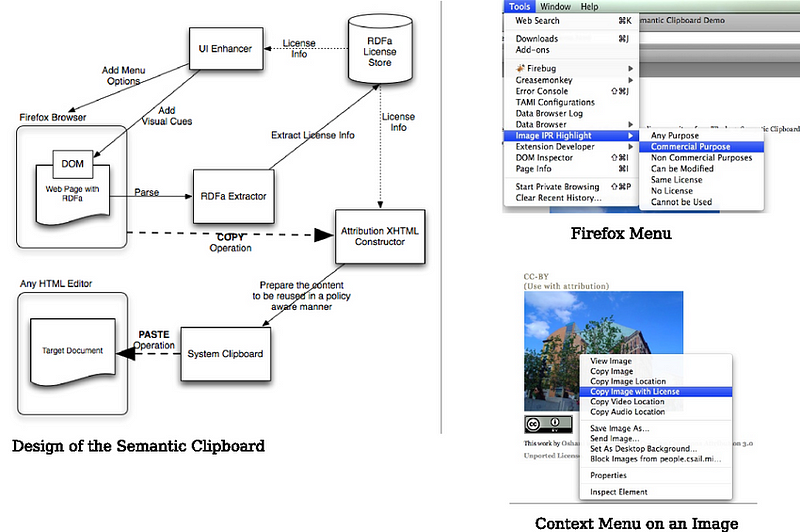
Policy-Aware Content Reuse on the Web — Semantic Clipboard (note TimBL Design Issues reference)
Part of the desirable attributes, was the ability to obtain structured data resources in relation to objects stored (ie: images, audio, videos) in the repository — that could in-turn support licensing lifecycles, between the source content custodian; it’s users, and others that in-turn find and seek to make use of those resources from a 3rd party discovery method. To achieve this, The MIT DIG CSAIL team have demonstrated the idea of a semantic clipboard which could in-turn be employed to support these licensing considerations in relation to an ecosystems approach that employed compatible methods.
I’d been working with print-industry professionals in earlier years, and was aware of ‘variable print’ and related API structures; which i thought, could provide income opportunities for the historical societies.
Today, improved functionality can be made using Credentials CG outcomes, as does otherwise relate more broadly to the ‘knowledge banking’ ecosystems.
Therein — knowledge, and the discovery of it, should generally be considered ‘commons’ in a manner that is supportive overall of human rights. Yet, this moral consideration is not intended to help those devote to usury.
As such; where use-cases are clearly commercial — it’s important to ensure the operational methodology provides support for distributing copyright fees, for the use of derivative works for commercial purposes. As is clearly expressed in my other articles — the desirable outcome; is to ‘automated’ processes that use ontological frameworks to make decisions fairly easily curated (e-contracts).
Why did i think doing the work on historical societies, was viable?
Beyond the broader considerations relating to ‘digital economy’ growth; The very practical consideration; that is actually quite important, is that, it was my finding that the seniors in these regional locations have all sorts of insights that relate to the objects stored in by the historical societies.
Whilst some of their belief’s may be false (or sometimes self-serving) the information in their heads and related artefacts of ‘knowledge’ that is easily able or able to be found by them adds significantly to what is shown in the assets themselves. This sort of unwritten knowledge, will be lost without preservation should preservation works not be curated, which in-turn assists seniors in learning how to manage their lives in the age of cyber-physical environments.
The sorts of informatics attributes in the heads of seniors; includes such things as,
- who the people are in photos
- where photos were taken
- what the history and relationship between the concepts (ie: people, places, events, related circumstances) were in relation to what is more easily seen in the object (ie: in the photo), etc.
It is important to have a production process, that obtains high-quality ‘master files’ (such as audio, video, images); and thereby afterwards, supports the production of derivatives.
In my experience, it would take around 15 minutes for an image asset to be processed by a senior. This could be accelerated by team-work, but was not easily achieved. Some assets didn’t have much information, so a visit to the nursing home or a couple of phone calls were made, on a number of occasions.
The equipment method, was (at the time) to use a Apple Mac Pro, and through that make use of aperture to support image correction, master/derivatives and metadata creation in relation to the images.
With respect to video, Final Cut Pro was used with a S-VHS to transfer some of the old media objects people had on shelves at home — that for the most part i processed, whilst forming improved training methods to assist seniors with a programme of work carried out over quite a long period of time; helping them understand how to do it themselves — whilst supporting the production processes that were a bit beyond their means to easily grasp.
As is described in my article about media analytics and processing, there is an increasing volume of media processing capabilities that are emerging. Therein, the ability to make best use of these opportunities — isn’t simply about the use of a global platform service, but moreover — ensuring the means for these tools to be made usefully available, for community projects.
Therein, whilst some projects may well be far more economically viable than others; the underlying consideration relating to works such as heritage, is that these business systems — when spread across the affiliated use-cases, improve support for defining the economic means to deliver advanced local services, and supporting infrastructure.
The same technology that is used to identify a person shown in a historical image or heard in an audio file; is a functional capacity that is similar to biometric identification, for the living.
What is more difficult to resolve, are the social factors; which is more easily examined by using ‘low stakes use-cases’ (that still have an array of high-stakes traits); rather than more simply focusing on the high-stakes use cases, and making mistakes whilst developing an organisational comprehension of new policies.
Therein also, amongst the broader challenges, are those that relate to defining safe & sophisticated, decentralised, standardised AI. GLAM can help.
The operational environments required to produce any media is fairly similar; whilst the underlying methods, broad ‘facility based’ capabilities and applicable methodologies for making use of that infrastructure, is very broad.
At that early stage, i found the standards for building ‘digital identity’ to not exist.
This in-turn led to my commencement of W3C works (RWW, Payments & Creds)
What i was unable to achieve in Mansfield (beyond the income sustainability factors); was the means to successfully build a program that brought together high-school students, to work with seniors collaboratively.
I found many seniors weren’t really very interested in this idea, particularly where the considerations extended to helping troubled kids.
More recently however, a project brought about by Noosa Council now better demonstrates the merits of an approach that goes about it, the other way around.
The Peregian digital hub demonstrates many of the functional qualities i sought to achieve, now some years ago.
Application of similar works; for (Australian) Aboriginal Communities.
The proposal i first worked on, back in 2009–10 called ‘the dreamtime foundation’ (nb game concept overview & old draft document about it — not sure which version) therein, the project was first born as a consequence of a good friend, based in dubai, asking me about producing a modern version of Wyld’s Great Globe which led to conceptual designs for an environment.
Which were in-turn supported by architectural designs prior to a presentation.
Therein — the concept was to build a space in dubai that provided the means to have UN meetings in an immersive media environment. It was in-effect, my first ideas about how to build an immersive, hypermedia exhibition centre.
But at the time, i couldn’t figure out how to cost the technology costs. The technology evolution, at that stage was not advanced enough, to cost it easily.
Example Community event produced (my idea, i also installed the screen system) in Dubai.
Nonetheless; the point of the story is, that it was as a consequence of my works in dubai; it was my job, to care for the local customs of emirate people.
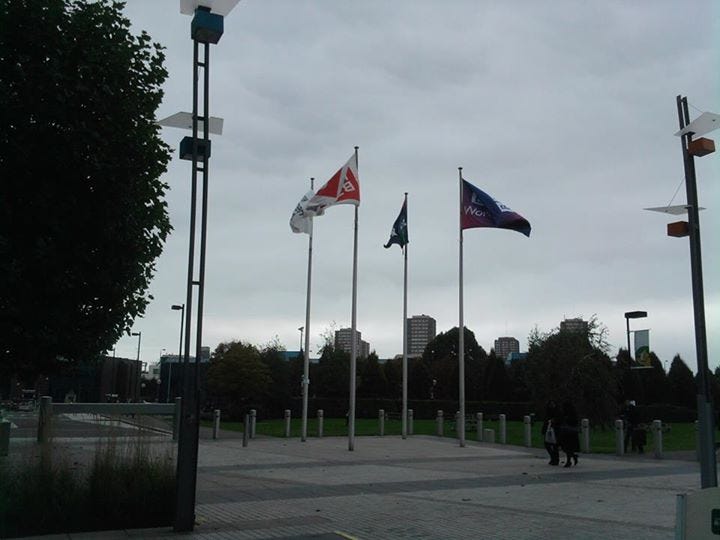
The cultural differences seemed to make some very significant illustrative differences to me.
I had a debate about ‘karaoke’ vs. ‘singstar’, which i thought not so much about at the time. I flew to london, and upon arriving back from london found that they’d organised alot of what was needed to do the event.
In Australia, i’d expect to speak about an idea, and then see it in the news after someone else did it; but there, I was amazed that whilst doing other work, they prepared for my return.
I felt this must come-down to the way we’ve culturally treated our indigenous heritage and those of an indigenous origin, in Australia; But i knew little of it, at the time.
So the thing about the ‘globe project’ in combination to my work on what i called, at the time — ‘the dreamtime foundation’ was that, there was an opportunity to produce immersive experiences, that could bridge the gap.
Therein, the works led by Brett Leavy provides the means to produce an environment that is fit-for-purpose, for a race of people who never used books.
The thing that’s still not really done, at least not to a level of satisfaction for me; is the ability to plug into the environment brett has produced, as to decentralise the knowledge systems in a manner i call — a human centric web. Whilst enormous progress has been made by brett over the full breadth of his journey; i note his work, and that there are specific needs that are difficult to easily comprehend (for the uninitiated) with respect to the cultural requirements that are important and necessary for indigenous cultural applications.
The fact that their heritage is not told in books, is one of the more simple considerations most people don’t consider, about what it is our libraries of today support — and the sorts of things they’re yet to resolve.
Many of the considerations about how to do this, are similarly applied for aboriginal persons from anywhere in the world; through to the ways & means through which these systems are applied, more broadly - otherwise.
Relationship to other community needs: disaster management
‘underneath the hood’, the ability to produce linked-data capable systems provides an array of functional opportunities that are not considered easily made available otherwise; and these opportunities have only grown since i first changed my life to pursue this broader commitment, back in 2010.
One such example; is the ability for community to be supported with the apparatus they require to support disaster management and leverage linked-data infrastructure, to work with local authorities; in a curated practice method that best enables them to do so.
One of the examples of how this type of functional capacity can be made to work is illustrated by the PUNYA project, by the same team (NB: Oshani Seneviratne) as the above mentioned ‘semantic clipboard’ project.
In my experience of working with the ‘Tim Berners-Lee’ related team, is that often it is well-known via media, things that are attributed specifically to Tim Berners-Lee, whilst often — more broadly, others have been instrumentally involved (eg).
Therein, whilst at these earlier times there were real-world technical issues that hampered the ability to deliver these sorts of apps, it is now something that is able to be developed in line with an ecosystem that supports ‘smart city’ infrastructure and related tooling for civics participation and the advancement of new business systems. Therein also, as was illustrated in an earlier ‘knowledge clouds article: USER STORY 1: ‘Lets go Fix problems caused by man in our Environment’; the opportunity isn’t simply about forming improved means to respond to disasters after they occur; but also, to produce new business systems that can fund ‘gainful employment’ that solves environmental problems, that could otherwise result in disaster.
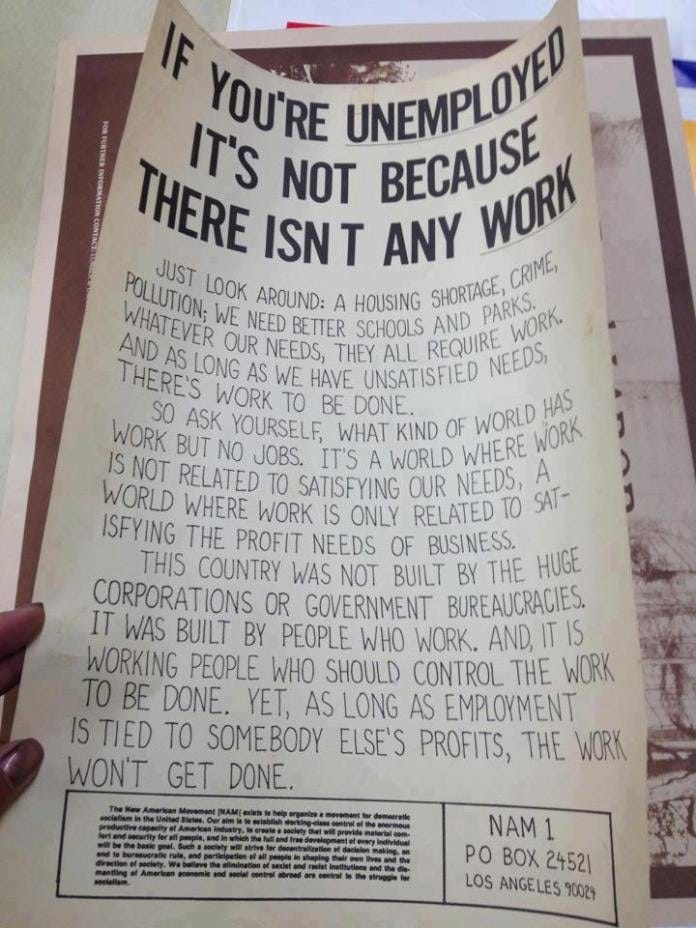
An underlying problem to the delivery of this type of outcome; is ICT literacy and the tooling necessary as to provide community members, opportunities.
Therein, the means to articulate provenance, acknowledgement (reputation) and form business systems, using micropayments, to support ‘knowledge workers’ for projects that are worthless, when their done — are all important factors and facets that can be programmed in as many ways as a contract can be defined in writing; whilst improving communities and opportunities for those who decide not to do nothing, to consume ‘entertainment’ but rather decide to find a job that needs to be done — and simply get on, with doing it. Today, it is the case that people can certainly go about doing that sort of thing; but the ability to show to a potential investor or employer in future the merits of their work, is hard.
The ability to trust that a person who does good work will be paid, is not sensible.
These problems are exhibited in society for the same sorts of social reasons, as those that lead people to form false belief’s based on what they’re told.
The problem is, that we’ve not built the infrastructure, for a knowledge age and whilst its very important; it’s also deeply inconvenient for some, who seek to “define reality” so i’ve asked them how & why; wondering if those who truely influence the lives of us all, are organising works to distort history.
Is this intended to be an ‘official act’ and if no-one knows how it all works, how could it possibly be the case that anyone else could do anything about it.
In my opinion, this is not an intentional sort of derivative outcome that is truely sought, by the real leaders in our world; but i also think, they don’t as yet fully appreciate the considerations made as to bring about a situation where i’m now writing medium articles as to supplement the case i am putting forward, as i ask the question.
Media Content Packaging
I’m not entirely sure i’ve illustrated this already in relation to other media posts, but just to ensure i’ve done so — here — there’s a concept of a hypermedia package — which is importantly considered, overall.
Therein — the first illustrative framework for it, was with respect to earlier works relating to HbbTV (circa 2007–8); whilst this was later shown to be how Digital Cinema Packages work (although, not as much as i thought they could); in addition to elearning (scorm) packages — the same considerations relate to other ‘hyper media’ frameworks / formats; whereby, the concept is about wrapping all the files relevant to artifact works; as to form a portable, archivable — entire embodiment of the materials required or relating to; an asset. This in-turn means, any analysis materials, metadata (structured data), binaries and formatted hypermedia files; bound together with a packaging description; which in-turn would contain information about dependencies.
The dependencies in-turn, able to be provided via permissive commons.
In Conclusion:
As has been illustrated elsewhere, the reality of situations, the ‘truth’ as they call it — has a way of finding its way through the webs people weave to distort and disassociate the truth, the means for others to discern reality; in an array of ways — that most often relates to money, power and false profits.
Whilst i can illustrate my views of how this has a meaningful relationship to physics and stuff i don’t fully understand; the underlying reality, is that distortion does not provide a supportive environment for healthy growth.
I found recently the article Quantum Physics Is Fine, Human Bias About Reality Is The Real Problem. In it the author Ethan Siegel remarks,
There is a strange and wonderful reality out there, but until we devise an experiment that teaches us more than we presently know, it’s better to embrace reality as we can measure it than to impose an additional structure driven by our own biases.
Therein — the social informatics and inferencing paradigms built by AI bots, off the back of false statements; will have an effect, as will fixing those problems. These are some of the considerations a number of similar sorts of articles i’ve discovered since first writing publicly about my weird ideas.
Yet i cannot safely say today, ‘here’s a tool to show the provenance’. This relationship between information & causality, is part of an experiment.
Therein the consideration is, that if we can’t deal appropriately with the ‘low stakes stuff’, why is it that people think the outcome will be any better for the high-stakes use cases, as to solve issues that can’t be addressed otherwise. This in-turn brings about some of the greatest reasons for looking at the heritage use cases. Beyond the fact that anything prior to the present-day is indeed — history, the means to parse through that lens a social commitments to form ‘honest inferences’ is in many ways much easier, than trying to do the same — for media prophets. Trying to do so, for the future.
My trading name ‘media prophet’ was registered on the basis, that it was easier to have a name that said clearly — up front — i told you so, than it is to do ‘clean-up’ and/or ‘emergency support’ projects, because people didn’t listen; or that they thought for some reason, what they do, doesn’t matter and today, they may be right. But the challenge, overall, is about making the right decisions when those decisions become part of what is history. Who has integrity, and who does not.
As was something i coined whilst homeless and concerned about my life;
Overall, imho, it’s all about ‘_walking with footsteps, in the presence of god’…_
People may argue what their definition of god is; but even if it’s simply the cyber-warfare capabilities delivering pervasive surveillance; one way or another and in this field, regardless of what scientific position is sought to stand the test of time; history provides the basis through which one is able to compel another that it’s time to ‘wake up’ and form a better relationship, with the programs that are operating world-wide defining who we are and what qualities we most value of each-other, to denote ‘success’ as a species and as independent natural persons. It’s quite important we provide the best possible means for children to learn about the real world, and not just get taught about ‘santa clause’ and ‘the tooth fairy’ whilst being expected to depend upon those ideas as they form their own means to navigate life, in our world.
By the time they grow up, I think, we want them to have more opportunities than were provided for their elders, not less. This is our choice to make, not theirs.